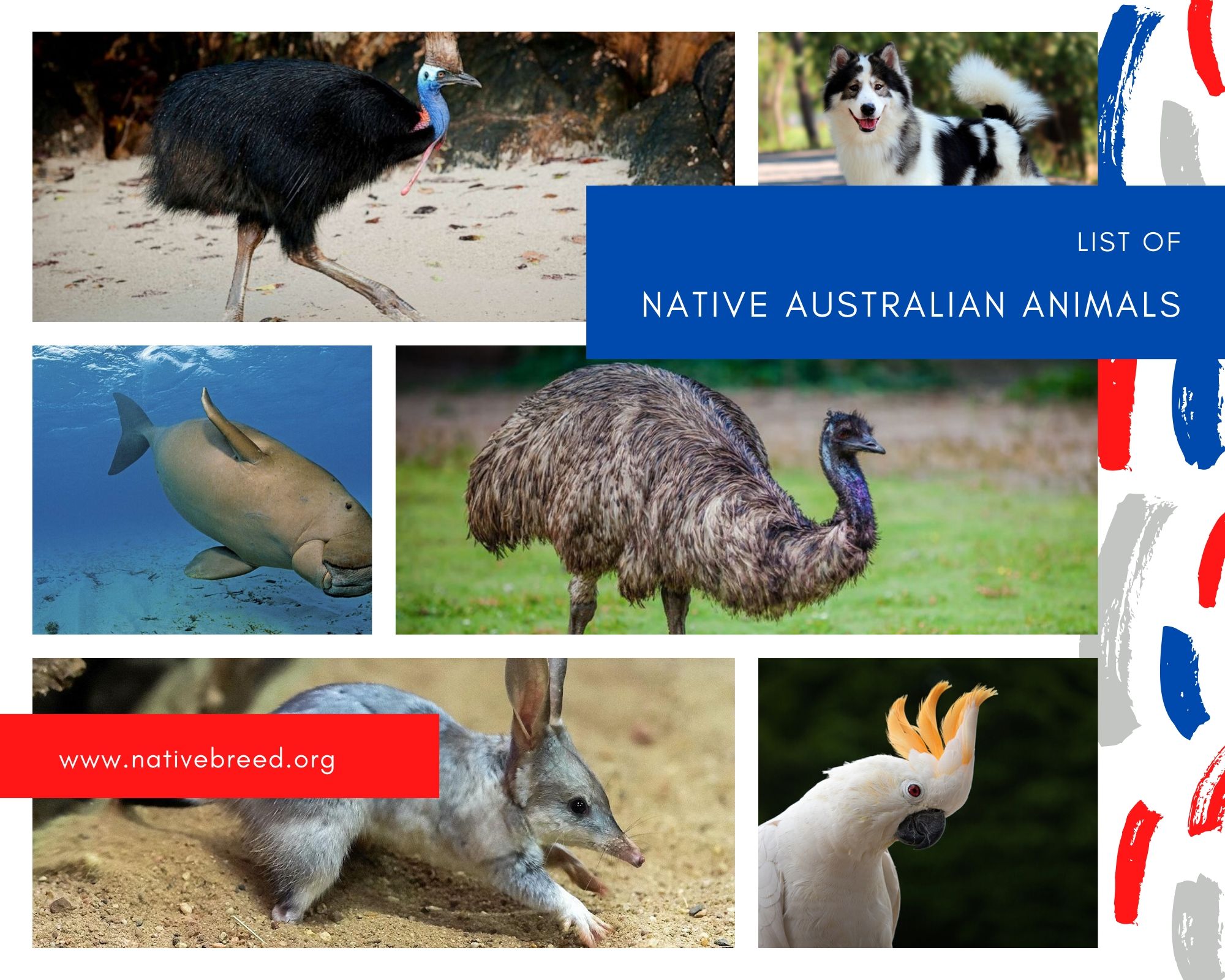The settlement of Australia by Indigenous Australians between 48,000 and 70,000 years ago (research in 2011 using DNA suggesting an arrival around 50,000 years ago), and by Europeans from 1788, has significantly affected the fauna. Hunting, the introduction of non-native species, and land-management practices involving the modification or destruction of habitats have led to numerous extinctions.
Below is a list of native Australian animals and some introduced species with a few facts thrown in so you can impress people. This list doesn’t include all Australian wildlife (yet) but the most well known and a few you’ve probably never heard of as well.
Australian Giant Cuttlefish
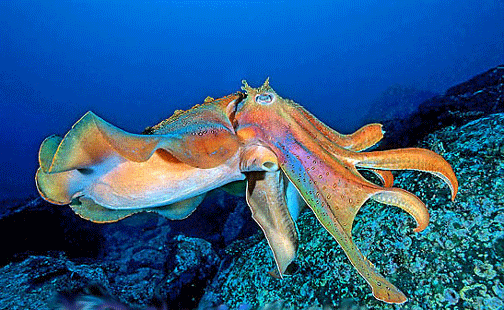
Sepia apama, also known as the giant cuttlefish and Australian giant cuttlefish, is the world’s largest cuttlefish species, growing to 50 cm (20 in) in mantle length and over 10.5 kg (23 lb) in weight. Using cells known as chromatophores, the cuttlefish can put on spectacular displays, changing colour in an instant.
giant cuttlefish is native to the southern coast of Australia, from Brisbane in Queensland to Shark Bay in Western Australia. It occurs on rocky reefs, seagrass beds, and sand and mud seafloor to a depth of 100 m.
Australian Pelican
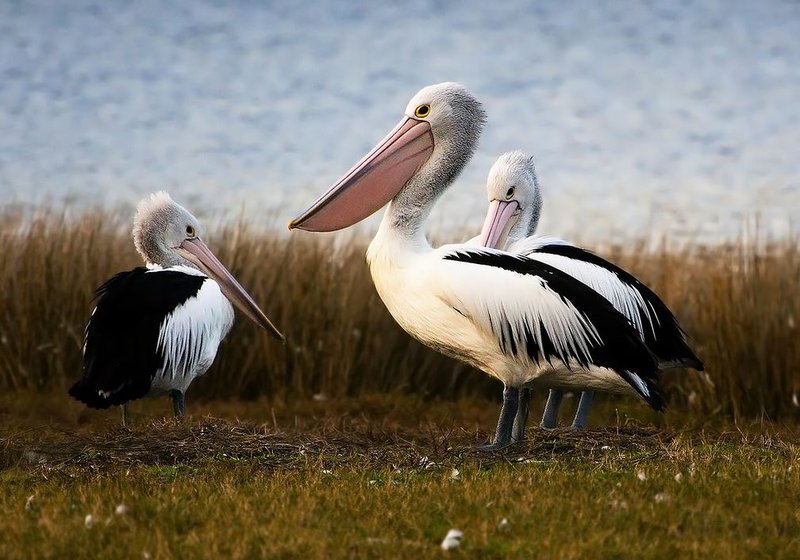
The Australian pelican is a large waterbird in the family Pelecanidae, widespread on the inland and coastal waters of Australia and New Guinea, also in Fiji, parts of Indonesia and as a vagrant in New Zealand. It is a predominantly white bird with black wings and a pink bill. It has been recorded as having the longest bill of any living bird. It mainly eats fish, but will also consume birds and scavenge for scraps if the opportunity arises.
Also Read: List of Austrian cattle breeds
Bandicoot
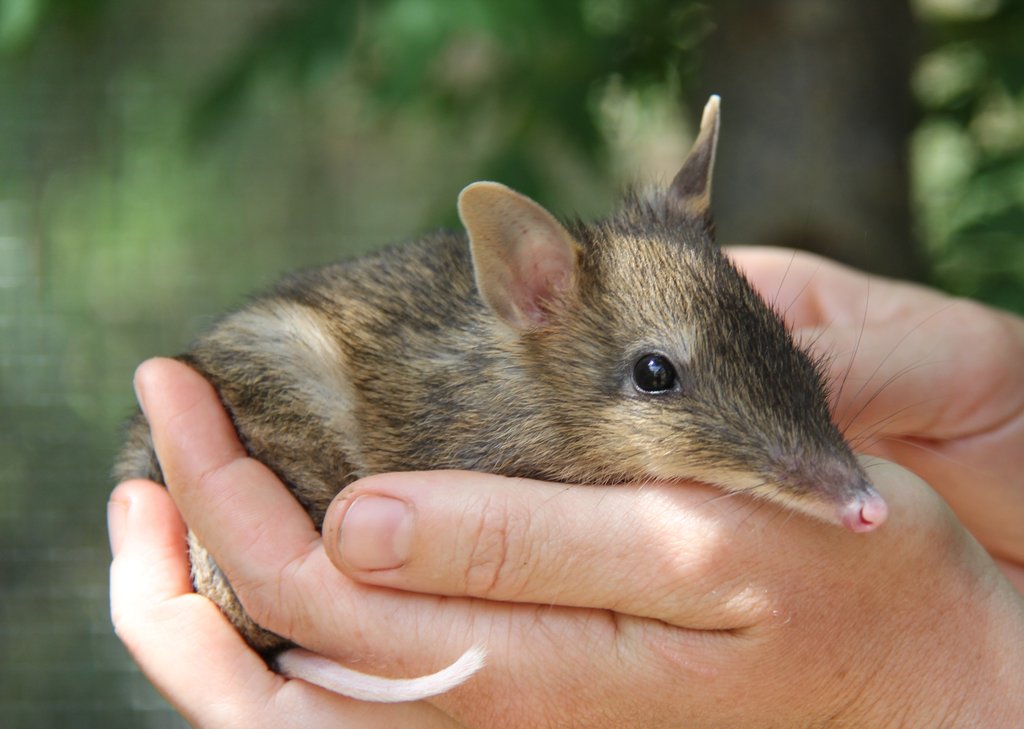
They are endemic to the Australia–New Guinea region, The term originally referred to the unrelated Indian bandicoot rat from the Telugu word Pandikokku.
Bilby
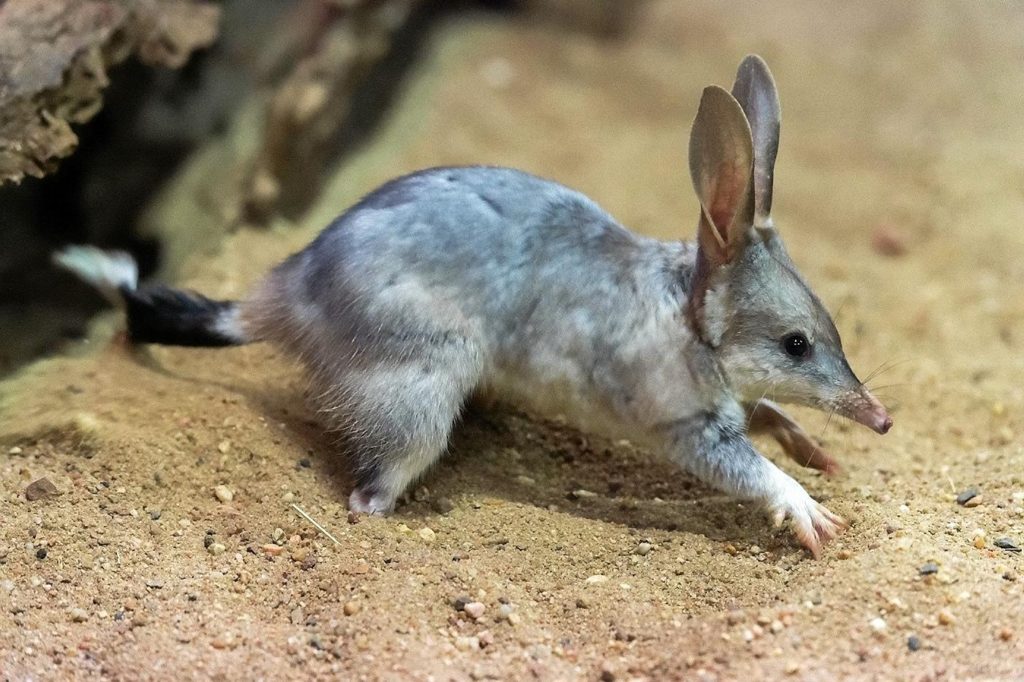
Macrotis, known as bilbies or rabbit-bandicoots, is a genus of desert-dwelling marsupial omnivores. At the time of European colonisation of Australia, there were two species. The lesser bilby became extinct in the 1950s; the greater bilby survives but remains endangered. It is currently listed as a vulnerable species. It is on average 55 cm (22 in) long, excluding the tail, which is usually around 29 cm (11 in) long. Its fur is usually grey or white, it has a long pointy nose and very long ears, hence earning its nick-name, the rabbit-eared bandicoot.
Brolga
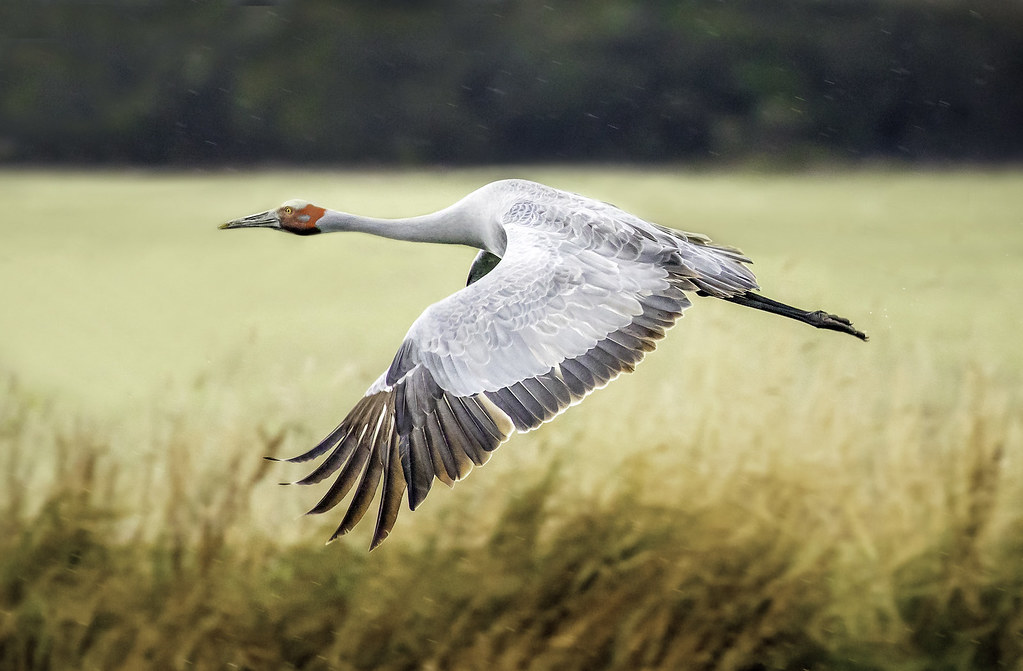
The brolga, formerly known as the native companion, is a bird in the crane family. It has also been given the name Australian crane.
The brolga is a common, gregarious wetland bird species of tropical and south-eastern Australia and New Guinea. It is a tall, upright bird with a small head, long beak, slender neck, and long legs. Its plumage is mainly grey, with black wingtips, and it has an orange-red band of colour on its head. The brolga’s courting dance is similar to that of other cranes and is well recognized by Australians. The nest is built of wetland vegetation, either on an elevated piece of land, or floating on shallow water in marshland, and usually, two eggs are laid. Incubation takes 32 days and the newly hatched young are precocial. The adult diet is omnivorous and includes plant matter, invertebrates, and small vertebrates.
Cassowary
Cassowaries are ratites (flightless birds without a keel on their sternum bone) that are native to the tropical forests of New Guinea (Papua New Guinea and Indonesia), East Nusa Tenggara, the Maluku Islands, and northeastern Australia.
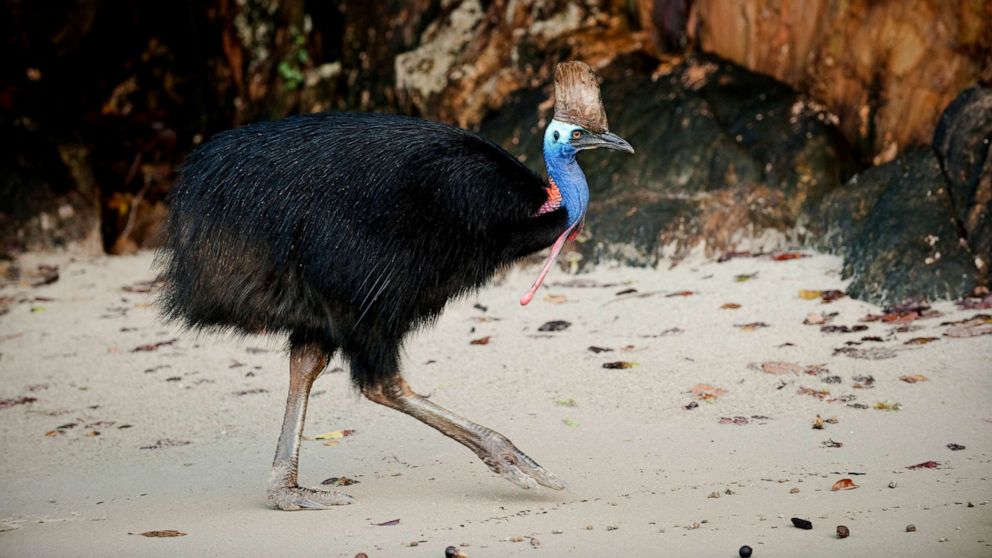
There are three extant species. The most common of these, the southern cassowary, is the third-tallest and second-heaviest living bird, smaller only than the ostrich and emu.
Cassowaries feed mainly on fruit, although all species are truly omnivorous and will take a range of other plant food, including shoots and grass seeds, in addition to fungi, invertebrates, and small vertebrates. Cassowaries are very wary of humans, but if provoked they are capable of inflicting serious injuries, including fatal, to both dogs and people. It has often been labelled “the world’s most dangerous bird”
Also Read: Australian native flowers
Cockatoo
The family has a mainly Australasian distribution, ranging from the Philippines and the eastern Indonesian islands of Wallacea to New Guinea, the Solomon Islands and Australia.
Cockatoos are recognisable by the prominent crests and curved bills. Their plumage is generally less colourful than that of other parrots, being mainly white, grey or black and often with coloured features in the crest, cheeks or tail. On average they are larger than other parrots.
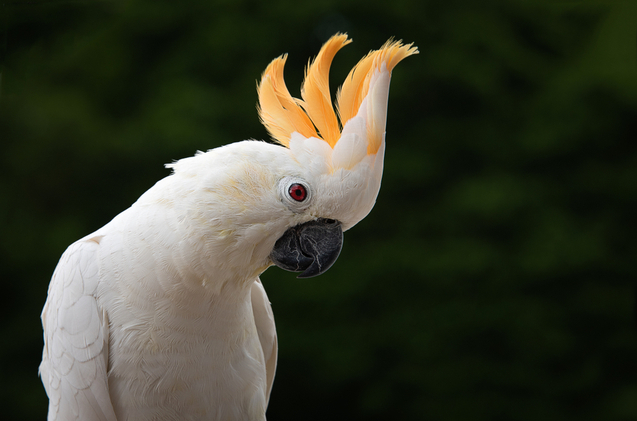
Cockatoos prefer to eat seeds, tubers, corms, fruit, flowers and insects. They often feed in large flocks, particularly when ground-feeding. Cockatoos are monogamous and nest in tree hollows. Some cockatoo species have been adversely affected by habitat loss, particularly from a shortage of suitable nesting hollows after large mature trees are cleared; conversely, some species have adapted well to human changes and are considered agricultural pests.
Cockatoos are popular birds in aviculture, but their needs are difficult to meet. The cockatiel is the easiest cockatoo species to maintain and is by far the most frequently kept in captivity. White cockatoos are more commonly found in captivity than black cockatoos. Illegal trade in wild-caught birds contributes to the decline of some cockatoo species in the wild.
Dingo
The dingo is a dog that is found in Australia. It is a medium-sized canine that possesses a lean, hardy body adapted for speed, agility, and stamina. The dingo’s three main coat colours are light ginger or tan, black and tan, or creamy white. The skull is wedge-shaped and appears large in proportion to the body.
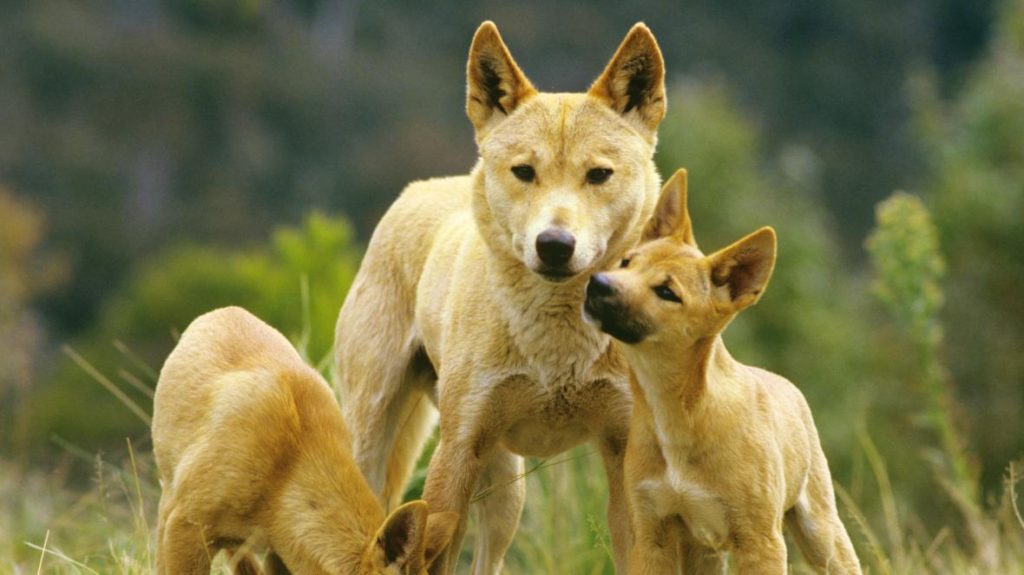
The earliest known dingo fossil, found in Western Australia, dates to 3,450 years ago, which led to the presumption that dingoes came to Australia with seafarers before that time. Dingo morphology has not changed over the past 3,500 years: this suggests that no artificial selection has been applied over this period.
The dingo’s habitat covers most of Australia, but they are absent in the southeast and Tasmania, and an area in the southwest.
Dugong
The dugong is a medium-sized marine mammal. The dugong is the only strictly herbivorous marine mammal.
The dugong is the only sirenian in its range, which spans the waters of some 40 countries and territories throughout the Indo-West Pacific. The dugong is largely dependent on seagrass communities for subsistence and is thus restricted to the coastal habitats which support seagrass meadows, with the largest dugong concentrations typically occurring in wide, shallow, protected areas such as bays, mangrove channels, the waters of large inshore islands and inter-reefal waters. The northern waters of Australia between Shark Bay and Moreton Bay are believed to be the dugong’s contemporary stronghold.
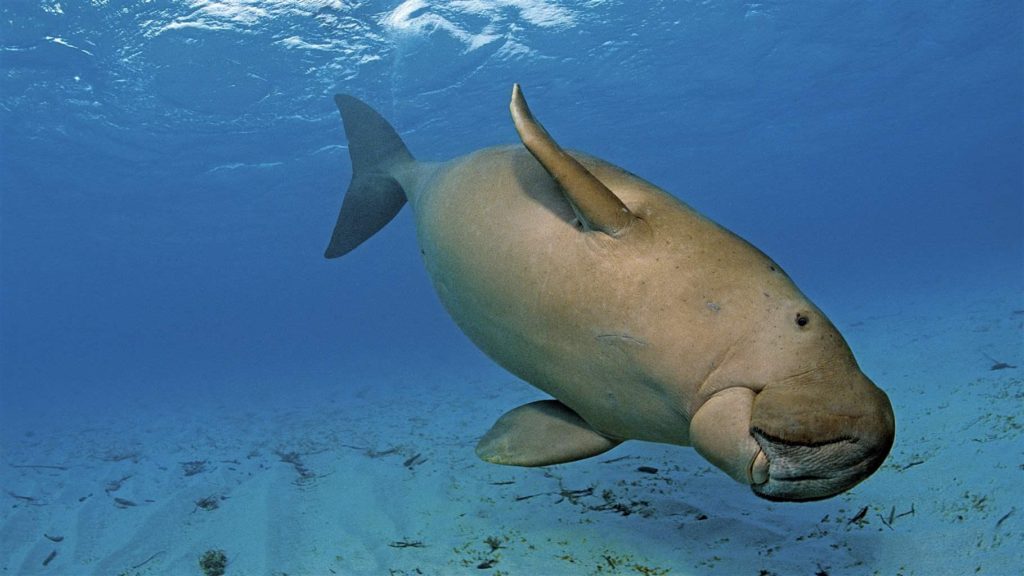
The dugong has been hunted for thousands of years for its meat and oil. With its long lifespan of 70 years or more and slow rate of reproduction, the dugong is especially vulnerable to extinction.
Also Read: Australian Mist Cat Breed
Echidna
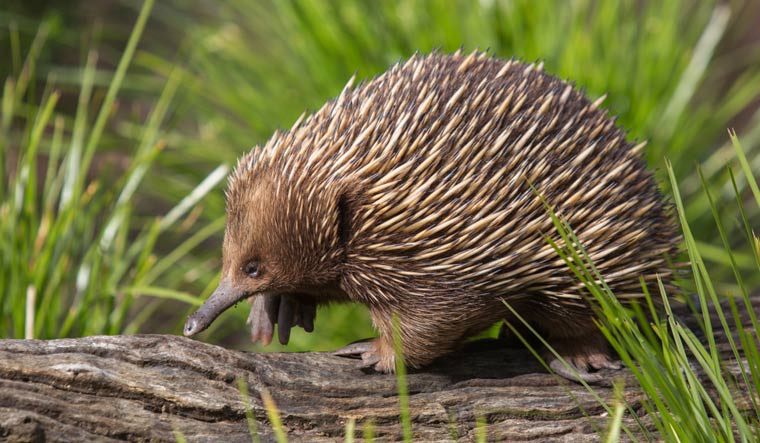
Echidnas evolved between 20 and 50 million years ago, descending from a platypus-like monotreme. This ancestor was aquatic, but echidnas adapted to life on land.
The echidnas are named after Echidna, a creature from Greek mythology who was half-woman, half-snake, as the animal was perceived to have qualities of both mammals and reptiles.
They are usually black or brown. There have been several reports of albino echidnas, their eyes pink and their spines white. They have elongated and slender snouts that function as both mouth and nose. Their claws on their hind limbs are elongated and curved backwards to help aid in digging. Echidnas have tiny mouths and toothless jaws. The ears are slits on the sides of their heads that are usually unseen, as they are blanketed by their spines.
Emu
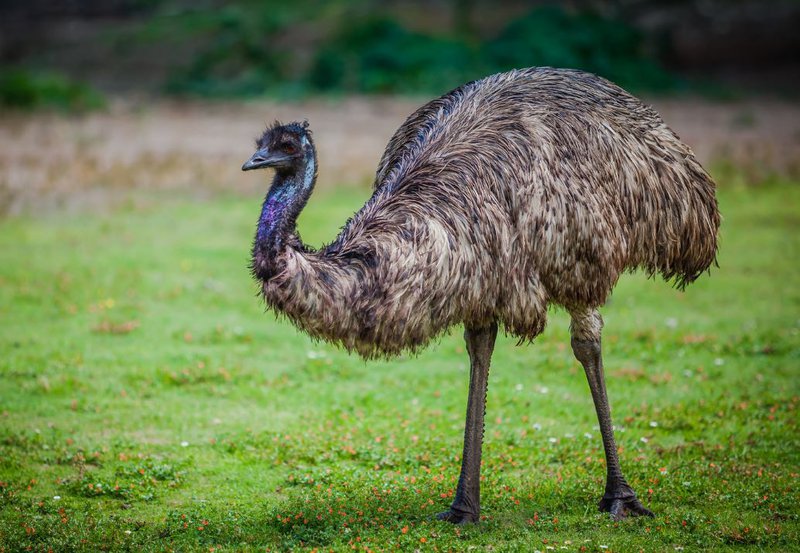
The emu is the second-largest living bird by height, after its ratite relative, the ostrich. It is endemic to Australia. The emu’s range covers most of mainland Australia, but the Tasmanian, Kangaroo Island and King Island subspecies became extinct after the European settlement of Australia in 1788.
Emus are soft-feathered, brown, flightless birds with long necks and legs, and can reach up to 1.9 metres (6.2 ft) in height. Emus can travel great distances, and when necessary can sprint at 50 km/h (31 mph); they forage for a variety of plants and insects, but have been known to go for weeks without eating. They drink infrequently but take in copious amounts of water when the opportunity arises.
The emu is an important cultural icon of Australia, appearing on the coat of arms and various coins. The bird features prominently in Indigenous Australian mythology.
Fairy Penguin
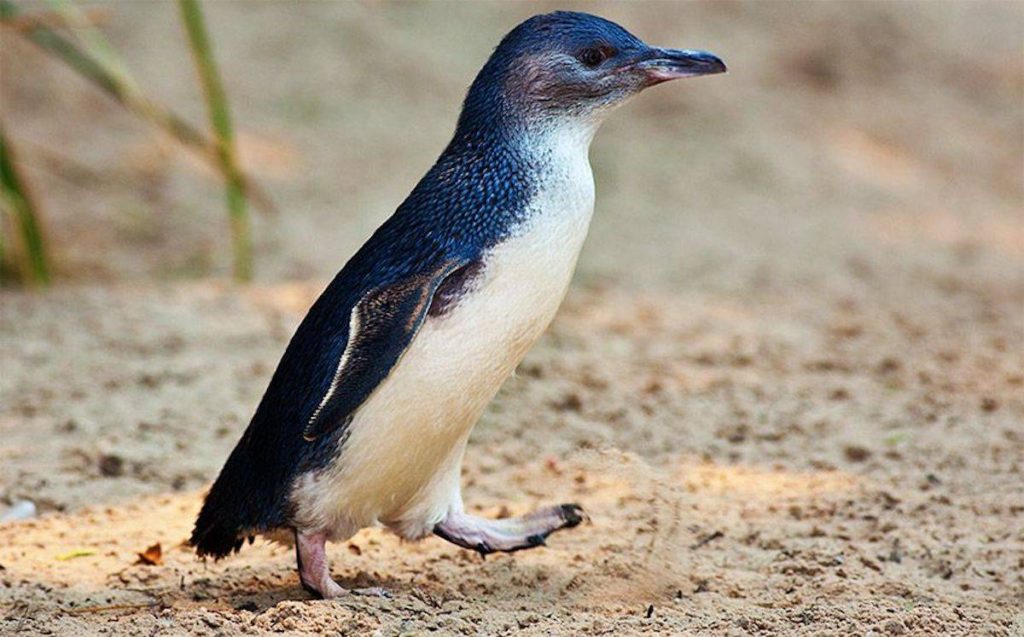
The fairy penguins are the smallest species of penguin. It grows to an average of 33 cm (13 in) in height and 43 cm (17 in) in length, though specific measurements vary by subspecies. It is found on the coastlines of southern Australia and New Zealand, with possible records from Chile. In Australia, they are often called little penguin because of their small size. In New Zealand, they are more commonly known as little blue penguins or blue penguins owing to their slate-blue plumage.
Flying Fox
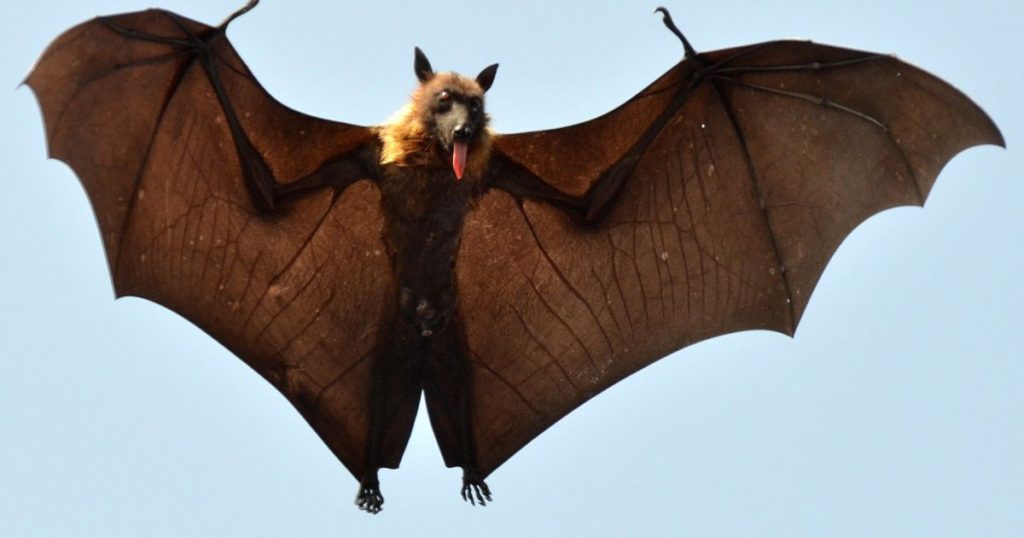
flying foxes is a genus of megabats which are among the largest in the world. They are commonly known as fruit bats or Pteropus. They live in the tropics and subtropics of Asia (including the Indian subcontinent), Australia, East Africa, and some oceanic islands in the Indian and Pacific Oceans.
Flying foxes eat fruit and other plant matter, and occasionally consume insects as well. They locate resources with their keen sense of smell. Most, but not all, are nocturnal. They navigate with keen eyesight, as they cannot echolocate. They have long life spans and low reproductive outputs, with females of most species producing only one offspring per year. Their slow life history makes their populations vulnerable to threats such as overhunting, culling, and natural disasters.
They have cultural significance to indigenous people, with appearances in traditional art, folklore, and weaponry. Their fur and teeth were used as currency in the past. Some cultures still use their teeth as currency today.
Frill Necked Lizard
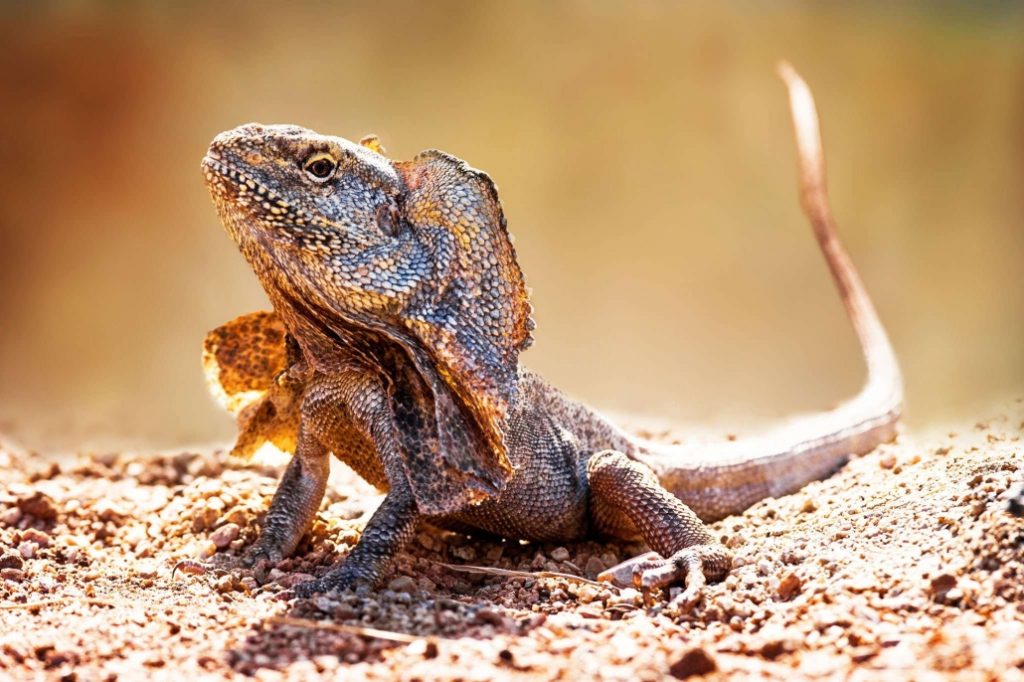
The frilled-necked lizard, also known commonly as the frilled lizard, frilled dragon or frilled agama, is a species of lizard in the family. The species is endemic to northern Australia and southern New Guinea.
Its common names come from the large frill around its neck, which usually stays folded against the lizard’s body.
A frill-necked lizard was featured on the reverse of the Australian 2-cent coin until 1991. A frill-necked lizard named “Lizzie” was the mascot for the 2000 Summer Paralympic Games. The lizard features on the emblem of the Northern Australian regiment NORFORCE.
Because of its unique appearance and behaviour, the creature has often been used in film and television. A frill-necked lizard named “Frank” appeared in the 1990 Disney animated film The Rescuers Down Under. In the 1993 film Jurassic Park, the dinosaur Dilophosaurus was portrayed with a neck frill that raised when attacking and generated an increase in demand for frill-necked lizards as pets.
Fur Seal
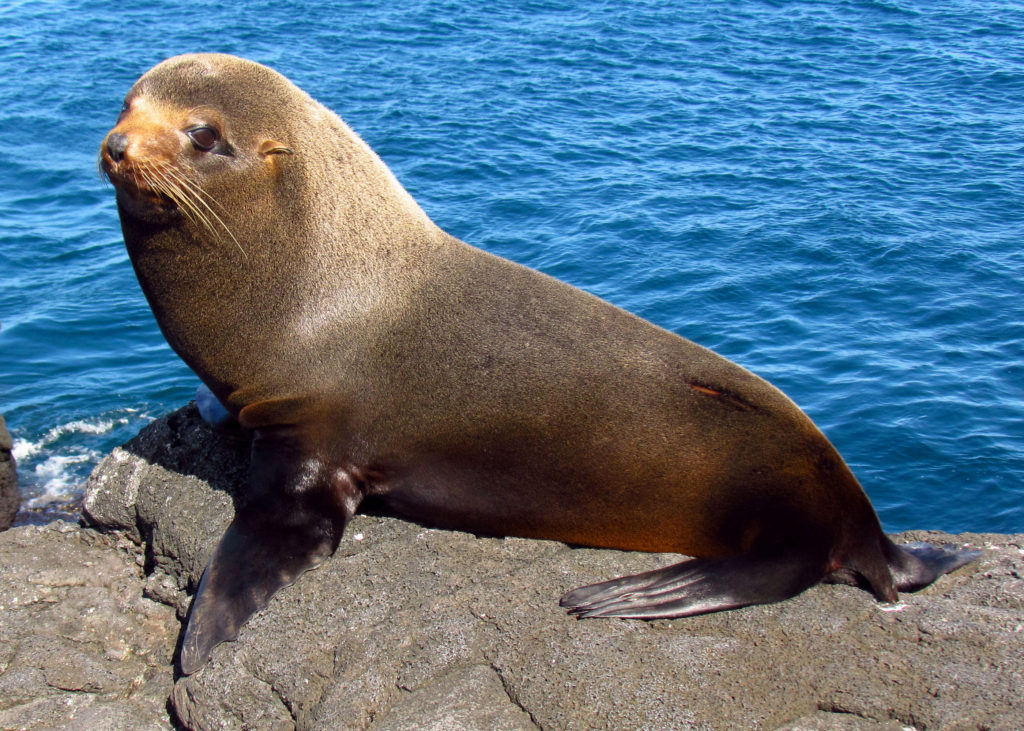
Fur seals are much more closely related to sea lions than true seals and share with them external ears, relatively long and muscular foreflippers, and the ability to walk on all fours. They are marked by their dense underfur, which made them a long-time object of commercial hunting.
Typically, fur seals gather during the summer in large rookeries at specific beaches or rocky outcrops to give birth and breed. All species are polygynous, meaning dominant males reproduce with more than one female. The breeding season typically begins in November and lasts 2–3 months. The northern fur seals begin their breeding season as early as June due to their region, climate, and resources. In all cases, the males arrive a few weeks early to fight for their territory and groups of females with which to mate.
Galah
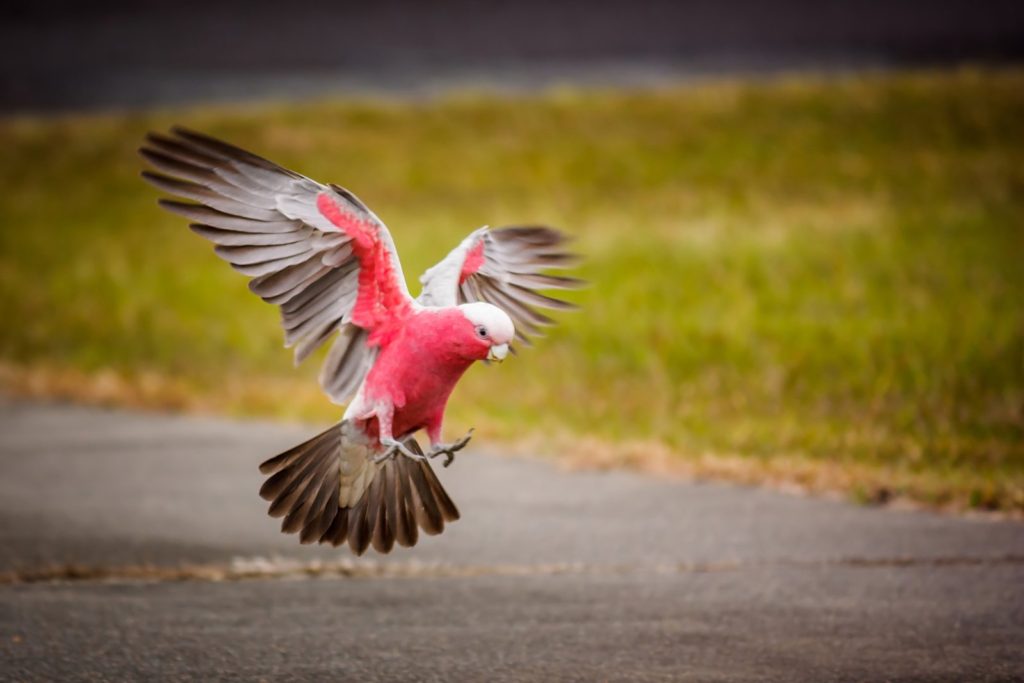
The galah, also known as the pink and grey cockatoo, is one of the most common and widespread cockatoos and it can be found in open country in almost all parts of mainland Australia.
It is endemic on the mainland and was introduced to Tasmania, where its distinctive pink and grey plumage and its bold and loud behaviour make it a familiar sight in the bush and increasingly in urban areas. It appears to have benefited from the change in the landscape since European colonisation and maybe replacing the Major Mitchell’s cockatoo in parts of its range.
The term galah is derived from gilaa, a word found in Yuwaalaraay and neighbouring Aboriginal languages.
Goanna
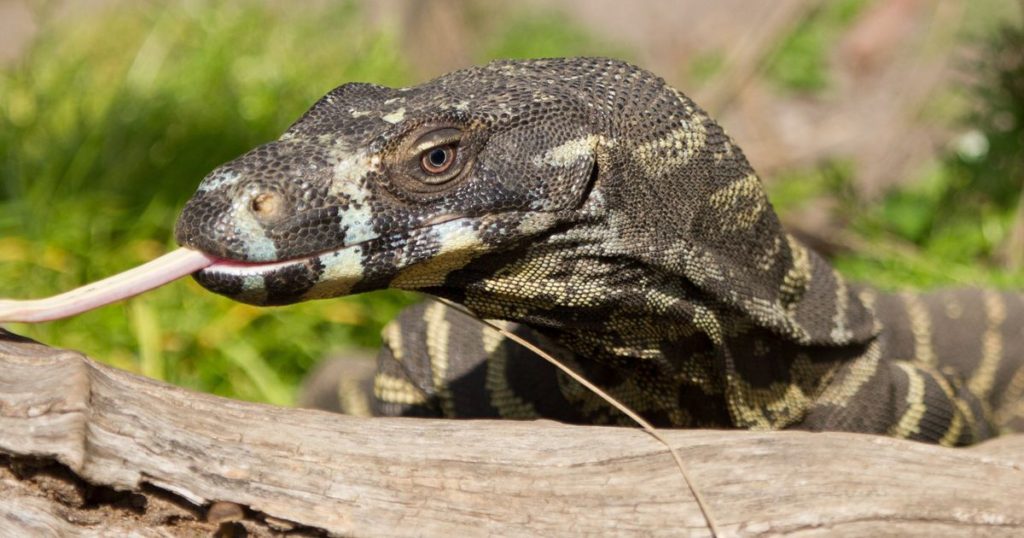
Being predatory lizards, goannas are often quite large, or at least bulky, with sharp teeth and claws. The largest is the perentie, which can grow over 2.5 m (8.2 ft) in length.
Goannas combine predatory and scavenging behaviours. They prey on any animal they can catch and are small enough to eat whole. Goannas have been blamed for the death of sheep by farmers, though most likely erroneously, as goannas are also eaters of carrion and are attracted to rotting meat.
Most goannas are dark-coloured, with greys, browns, blacks, and greens featuring prominently; however, white is also common. Many desert-dwelling species also feature yellow-red tones. Camouflage ranges from bands and stripes to splotches, speckles, and circles, and can change as the creature matures, with juveniles sometimes being brighter than adults.
Goannas are found throughout most of Australia, except for Tasmania, and manage to persist in a variety of environments. Most species are known to climb trees or outcrops.
found in lagoons and rivers across northern Australia, is streamlined for swimming, using its tail as a paddle. Most other goannas are good swimmers but tend not to voluntarily venture into the water.
Ibis (Australian White)
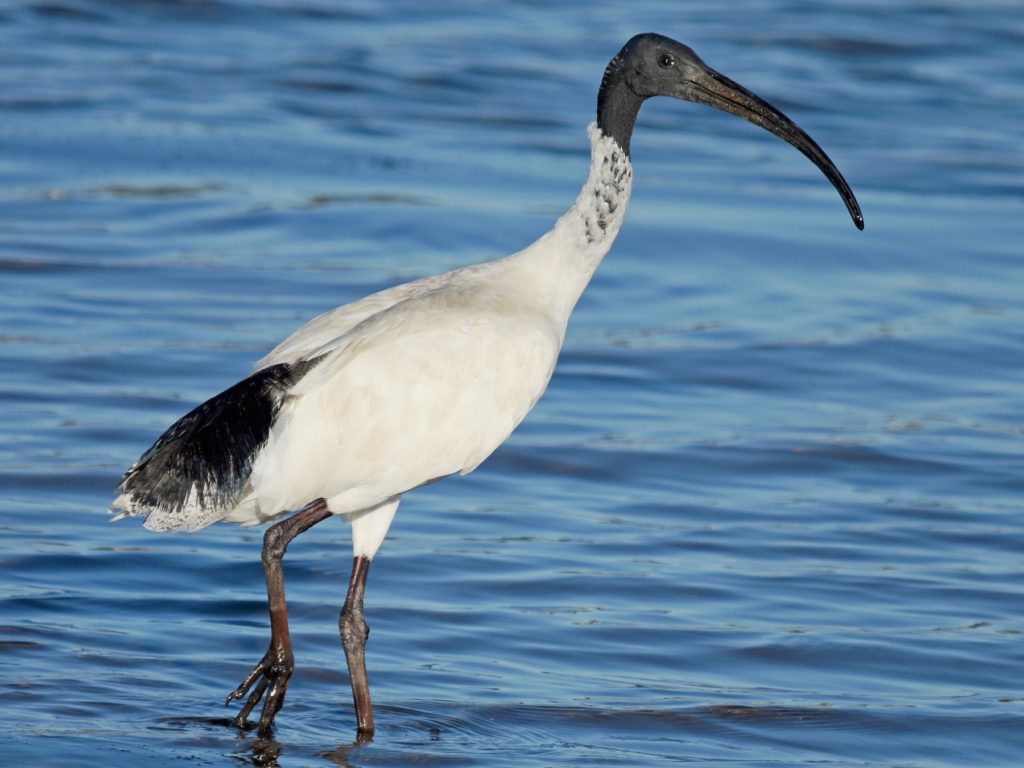
The Australian white ibis has a predominantly white plumage with a bare, blackhead, long downcurved bill and black legs.
Historically rare in urban areas, the Australian white ibis has migrated to urban areas of the east coast in increasing numbers since the late 1970s; it is now commonly seen in Wollongong, Sydney, Melbourne, Darwin, the Gold Coast, Brisbane and Townsville.
In recent years the bird has also become increasingly common in Perth, Western Australia, and surrounding towns in south-western Australia.
Populations have disappeared from natural breeding areas such as the Macquarie Marshes in northern New South Wales.
Kangaroo
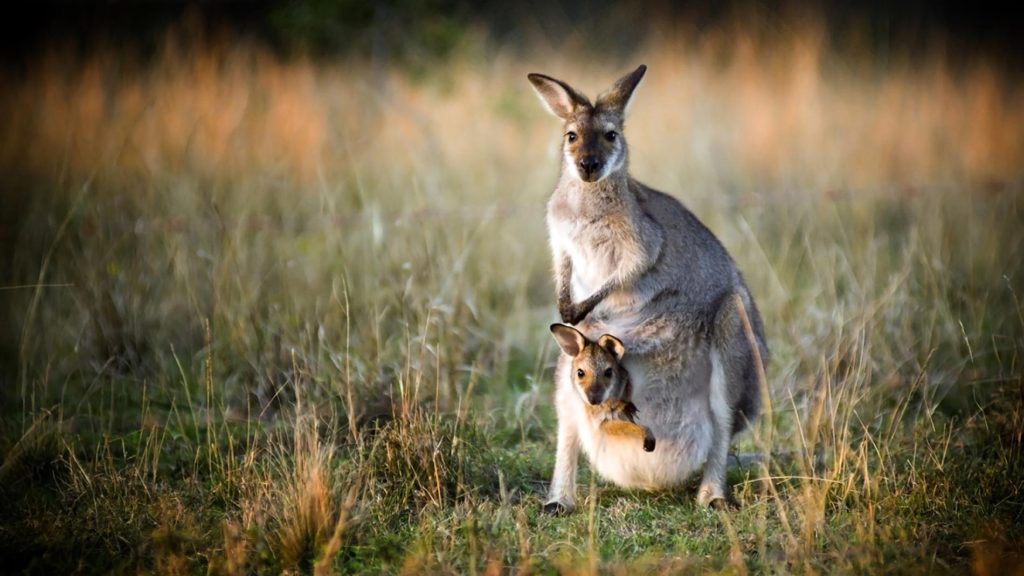
The Australian government estimates that 34.3 million kangaroos lived within the commercial harvest areas of Australia in 2011, up from 25.1 million one year earlier.
Kangaroos have large, powerful hind legs, large feet adapted for leaping, a long muscular tail for balance, and a small head. Like most marsupials, female kangaroos have a pouch called a marsupium in which joeys complete postnatal development.
The kangaroo is a symbol of Australia and appears on the Australian coat of arms and on some of its currency and is used by some of Australia’s well-known organisations, including Qantas and the Royal Australian Air Force. The kangaroo is important to both Australian culture and the national image, and consequently, there are numerous popular culture references.
Wild kangaroos are shot for meat, leather hides, and to protect grazing land. Although controversial, kangaroo meat has perceived health benefits for human consumption compared with traditional meats due to the low level of fat on kangaroos.
Koala
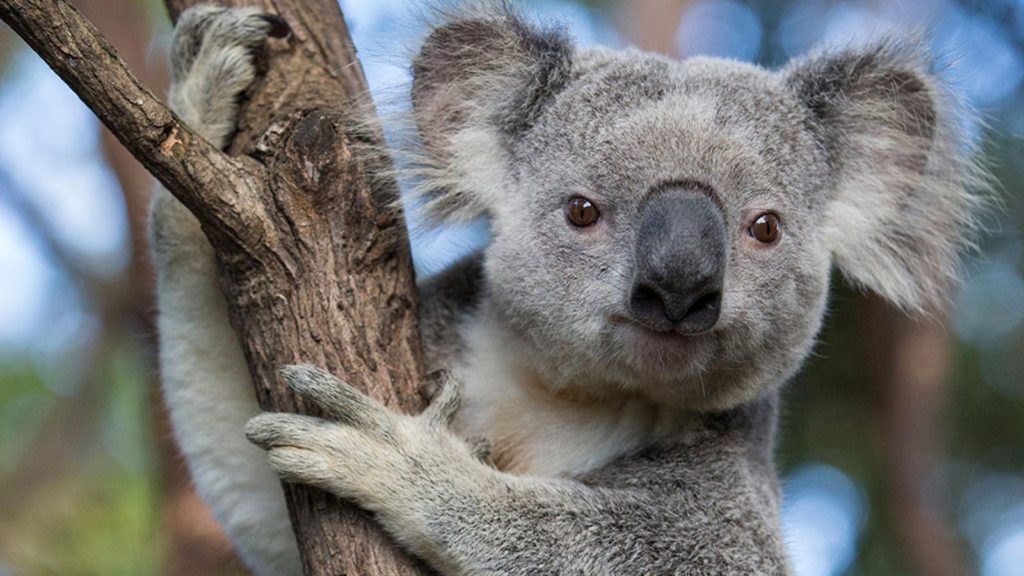
The koala or, inaccurately, koala bear is found in coastal areas of the mainland’s eastern and southern regions, inhabiting Queensland, New South Wales, Victoria, and South Australia. It is easily recognisable by its stout, tailless body and large head with round, fluffy ears and large, spoon-shaped nose. The koala has a body length of 60–85 cm (24–33 in) and weighs 4–15 kg (9–33 lb). Fur colour ranges from silver grey to chocolate brown. Koalas from the northern populations are typically smaller and lighter in colour than their counterparts further south. These populations possibly are separate subspecies, but this is disputed.
Koalas typically inhabit open eucalypt woodlands, and the leaves of these trees make up most of their diet. Because this eucalypt diet has limited nutritional and caloric content, koalas are largely sedentary and sleep up to 20 hours a day. They are asocial animals, and bonding exists only between mothers and dependent offspring. Adult males communicate with loud bellows that intimidate rivals and attract mates. Males mark their presence with secretions from scent glands located on their chests. Being marsupials, koalas give birth to underdeveloped young that crawl into their mothers’ pouches, where they stay for the first six to seven months of their lives. These young koalas, known as joeys, are fully weaned around a year old. Koalas have few natural predators and parasites but are threatened by various pathogens, such as Chlamydiaceae bacteria and the koala retrovirus.
Kookaburra
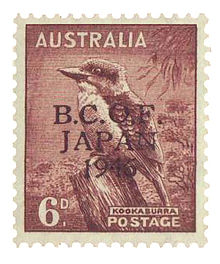
Kookaburras are terrestrial tree kingfishers native to Australia and New Guinea, which grow to between 28–42 cm (11–17 in) in length and weigh around 300 g (10.5 oz).
They are found in habitats ranging from humid forest to arid savanna, as well as in suburban areas with tall trees or near running water. Even though they belong to the larger group known as “kingfishers”, kookaburras are not closely associated with water.
Kookaburras are almost exclusively carnivorous, eating mice, snakes, insects, small reptiles, and the young of other birds; unlike many other kingfishers, they rarely eat fish, although they have been known to take goldfish from garden ponds. In zoos they are usually fed food for birds of prey.
Lyre Bird
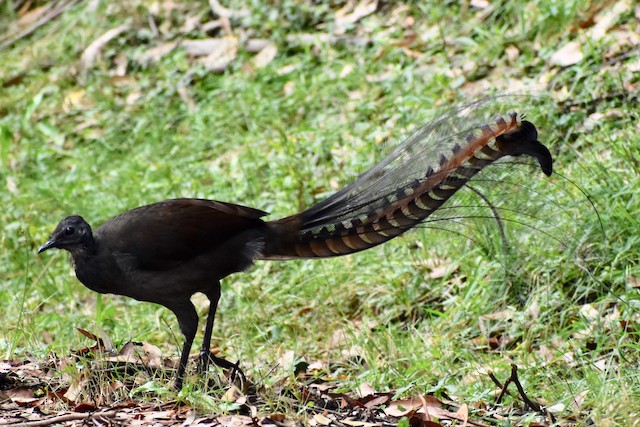
A lyrebird is either of two species of ground-dwelling Australian birds. They are most notable for their superb ability to mimic natural and artificial sounds from their environment, and the striking beauty of the male bird’s huge tail when it is fanned out in courtship display. Lyrebirds have unique plumes of neutral-coloured tailfeathers and are among Australia’s best-known native birds.
Numbat
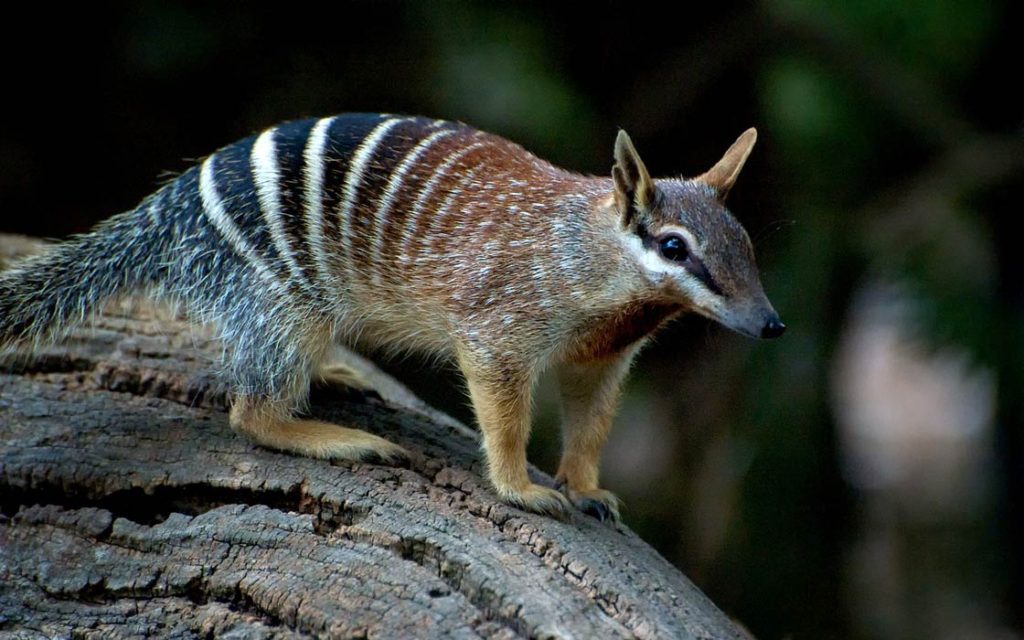
The numbat native to Western Australia and recently re-introduced to South Australia. The species is also known as the noombat or walpurti. Its diet consists almost exclusively of termites. Once widespread across southern Australia, its range is now restricted to several small colonies and it is considered an endangered species. The numbat is an emblem of Western Australia and protected by conservation programs.
An intensive research and conservation program since 1980 has succeeded in increasing the numbat population substantially, and reintroductions to fox-free areas have begun. Perth Zoo is very closely involved in breeding this native species in captivity for release into the wild. Despite the encouraging degree of success so far, the numbat remains at considerable risk of extinction and is classified as an endangered species.
Platypus
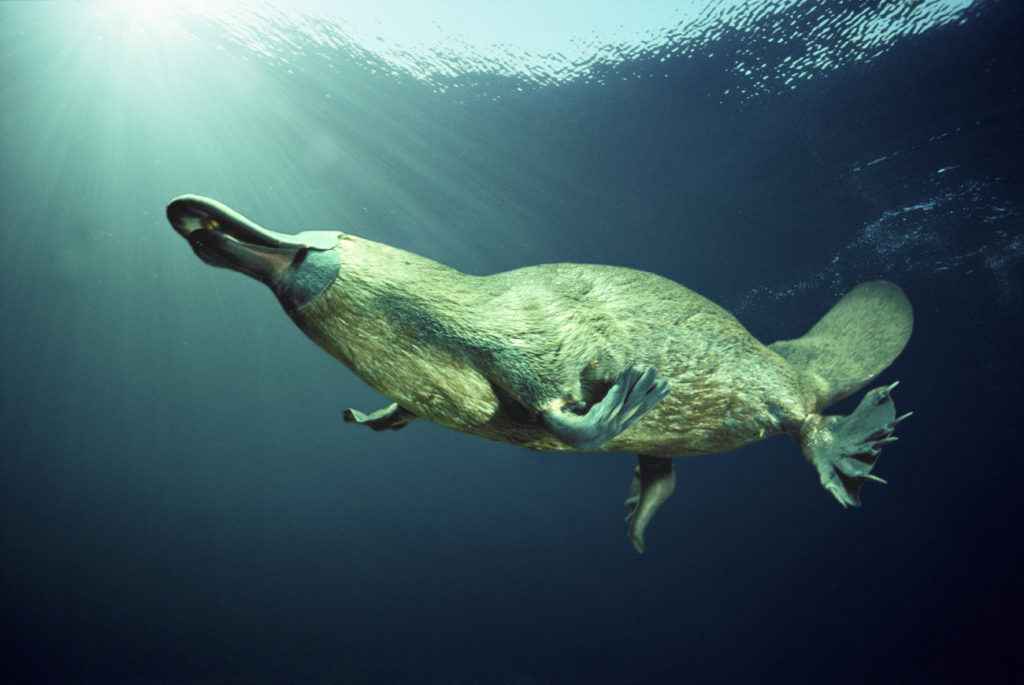
The platypus, sometimes referred to as the duck-billed platypus, is a egg-laying mammal endemic to eastern Australia, including Tasmania. It is one of the few species of venomous mammals, as the male platypus has a spur on the hindfoot that delivers a venom capable of causing severe pain to humans.
The unusual appearance of this egg-laying, duck-billed, beaver-tailed, otter-footed mammal baffled European naturalists when they first encountered it, and the first scientists to examine a preserved platypus body (in 1799) judged it a fake, made of several animals sewn together.
The unique features of the platypus make it an important subject in the study of evolutionary biology, and a recognisable and iconic symbol of Australia. It has appeared as a mascot at national events and features on the reverse of the Australian twenty-cent coin, and the platypus is the animal emblem of the state of New South Wales.
Pygmy Possum
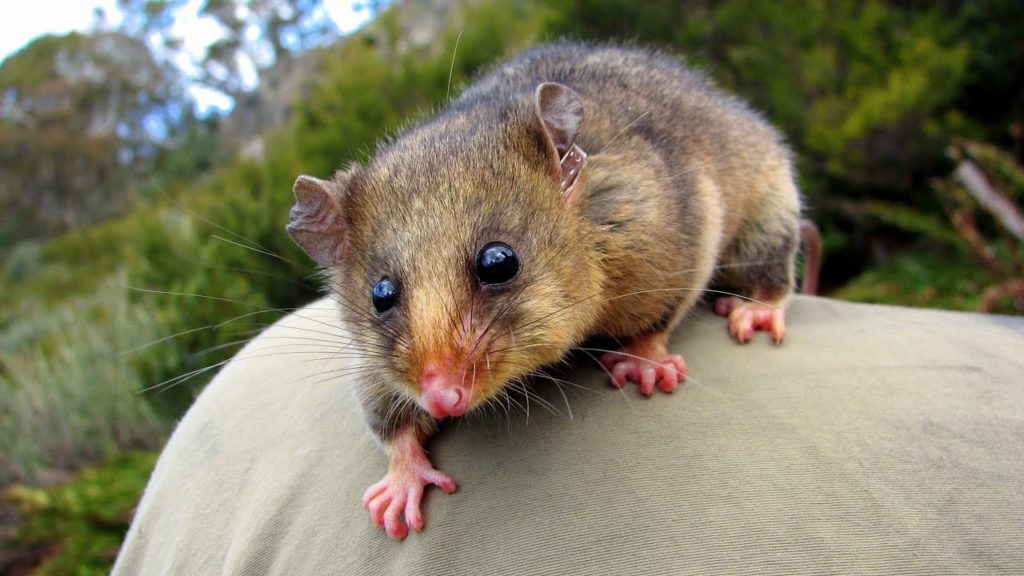
The pygmy possums are endemic to Australia, Pygmy possums range in length from about 5 to 12 cm (2.0 to 4.7 in), and usually weigh between 10 and 50 grams (0.35 and 1.76 oz). They are nocturnal and omnivorous, living on a diet of invertebrates, fruit, seed, nectar and pollen. They are excellent climbers, due in part to their prehensile tails. Although they cannot glide like some possums, some species can leap long distances. They have a prehensile tail for grabbing branches but spend most of their time on the ground.
The mountain pygmy possum is the only mammal restricted to the alpine and sub-alpine areas of mainland Australia. It was thought to be extinct until rediscovered in 1966 at Mt Higginbotham in Victoria. They are the only Australian marsupial that hibernates. Given the alpine climates in which they live they store energy in fat deposits before rolling into a ball and engaging in heterothermy during winter months.
Quokka
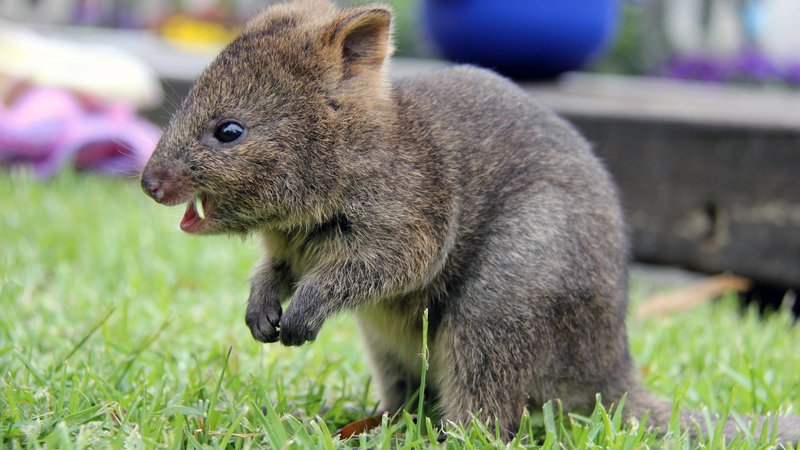
The quokka about the size of a domestic cat, the quokka is herbivorous and mainly nocturnal.
Quokkas are found on some smaller islands off the coast of Western Australia, particularly Rottnest Island, just off Perth, and also Bald Island near Albany, and in isolated, scattered populations in the forest and coastal heath between Perth and Albany. A small colony exists at the eastern limit of their range in a protected area of Two Peoples Bay Nature Reserve, where they co-exist with the critically endangered Gilbert’s potoroo.
Quoll
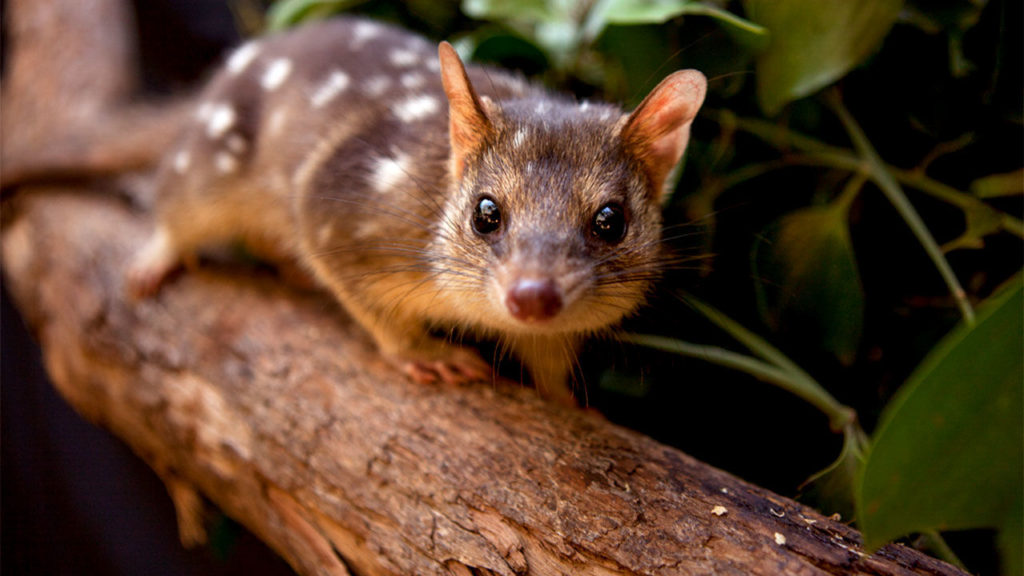
Quolls are carnivorous native to Australia and New Guinea, they spend most of the day in a den. Of the six species of quoll, four are found in Australia and two in New Guinea.
Genetic evidence indicates that quolls evolved around 15 million years ago in the Miocene, They have brown or black fur and pink noses. They are largely solitary but come together for a few social interactions such as mating which occurs during the winter season. A female gives birth to up to 18 pups, of which only six survive because she only has six teats with which to feed them.
Quolls eat smaller mammals, small birds, lizards, and insects. Their natural lifespan is between two and five years. All species have drastically declined in numbers since Australasia was colonised by Europeans, with one species, the eastern quoll, becoming extinct on the Australian mainland, now found only in Tasmania. Major threats to their survival include the cane toad, predators such as feral cats and foxes, urban development, and poison baiting. Conservation efforts include breeding programs in captivity, one of which is taking place in Tasmania with support from Rewilding Australia and Conjour.
Sugar Glider
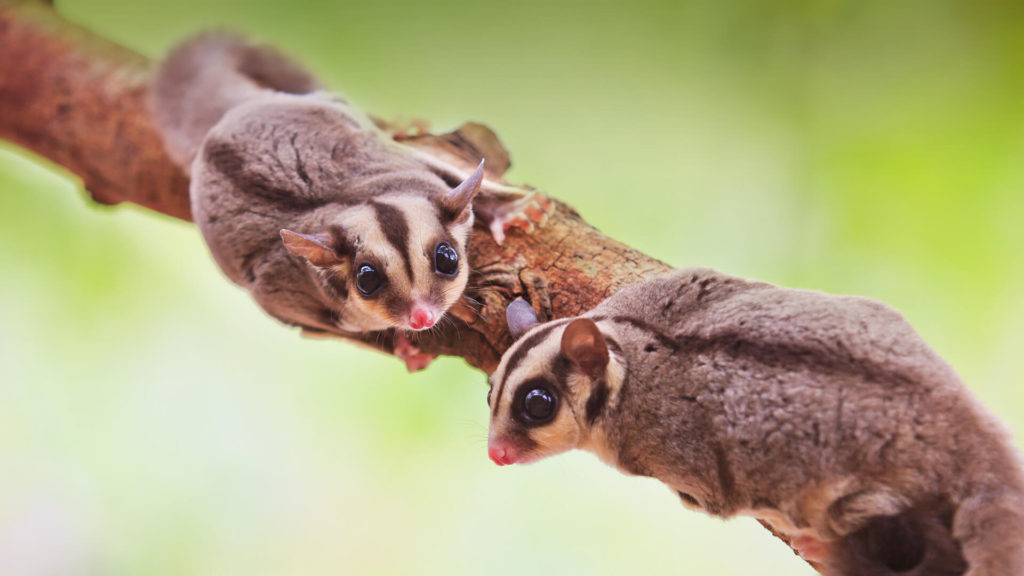
The sugar glider is a small omnivorous. The common name refers to its preference for sugary foods such as sap and nectar and its ability to glide through the air, much like a flying squirrel. They have very similar habits and appearance to the flying squirrel.
Gliding serves as an efficient means of reaching food and evading predators. The animal is covered in soft, pale grey to light brown fur which is counter-shaded, being lighter in colour on its underside.
The sugar glider is endemic to parts of mainland Australia, New Guinea and certain Indonesian islands; and it was introduced to Tasmania, probably in the 1830s. It is a popular exotic pet but is prohibited in some regions, including parts of Australia and the United States.
Tasmanian Devil
It was once native to mainland Australia and is now found in the wild only on the island state of Tasmania, including tiny east-coast Maria Island where there is a conservation project with disease-free animals.
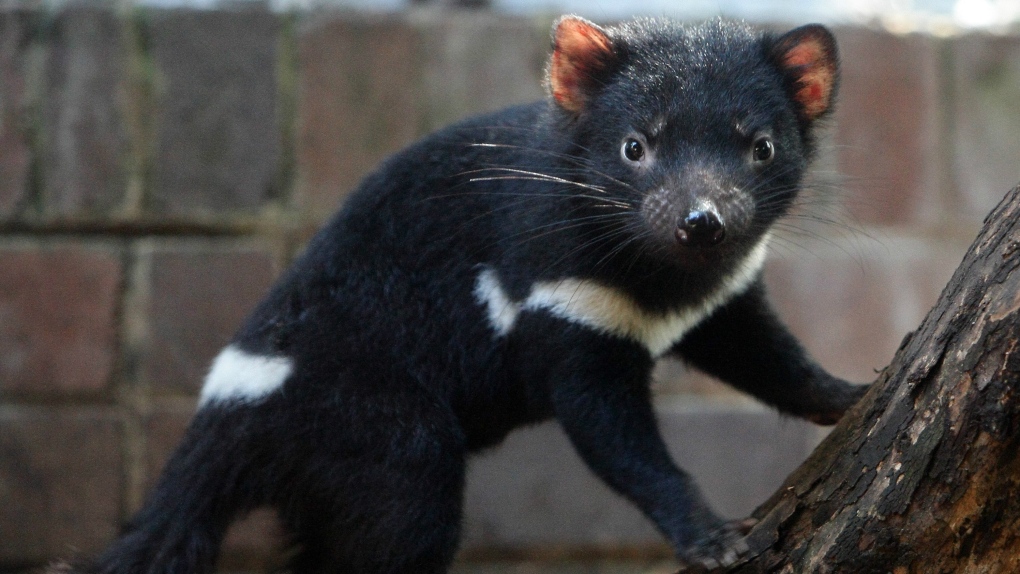
The size of a small dog, the Tasmanian devil became the largest carnivorous marsupial in the world following the extinction of the thylacine in 1936. It is related to quolls and distantly related to the thylacine. It is characterised by its stocky and muscular build, black fur, pungent odour, extremely loud and disturbing screech, a keen sense of smell, and ferocity when feeding. The Tasmanian devil’s large head and neck allow it to generate among the strongest bites per unit body mass of any extant predatory land mammal, and it hunts prey and scavenges carrion as well as eating household products if humans are living nearby.
Thorny Devil
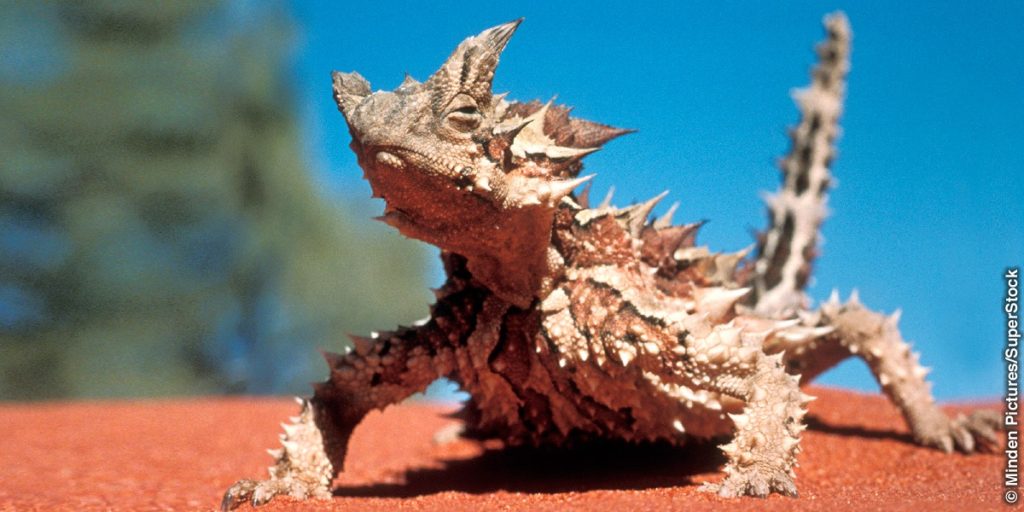
The thorny devil, also known commonly as the mountain devil, thorny lizard, thorny dragon, and moloch, is a species of lizard. The species is endemic to Australia. It grows up to 21 cm (8.3 in) in total length (including tail), with females generally larger than males.
The thorny devil is covered in hard, rather sharp spines that dissuade attacks by predators by making it difficult to swallow. It also has a false head on its back. When it feels threatened by other animals, it lowers its head between its front legs and then presents its false head. Predators that consume the thorny devil include wild birds and goannas.
Wallaby
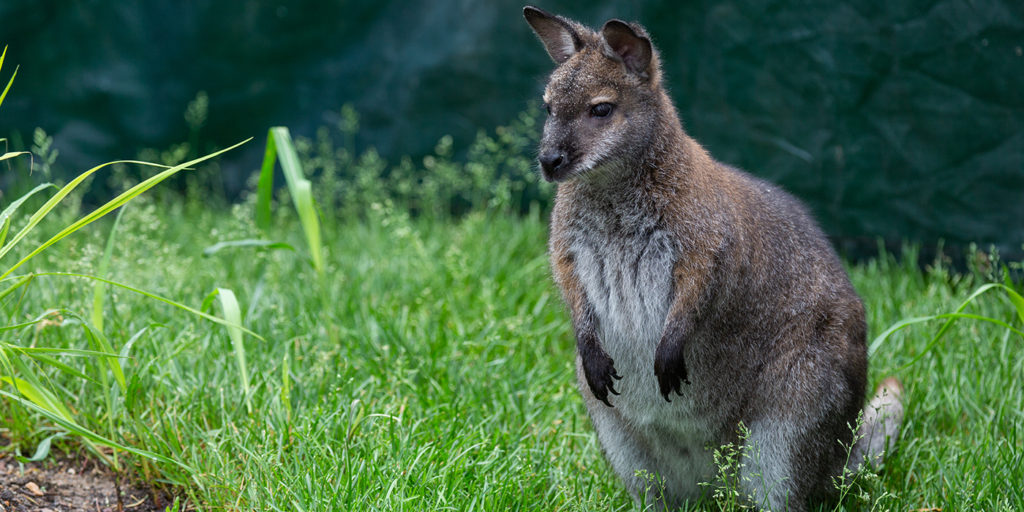
A wallaby is a small or mid-sized macropod native to Australia and New Guinea. They belong to the same family as kangaroos.
wallabies live among rocks, usually near water.
Wallabies are hunted for meat and fur. A similar species is the short-tailed scrub wallaby or quokka; this species is now restricted to two offshore islands of Western Australia. The dwarf wallaby is the smallest member of the genus and the smallest known member of the kangaroo family. Its length is about 46 cm (18 in) from nose to tail, and it weighs about 1.6 kg (3.5 lb).
Wallaroo
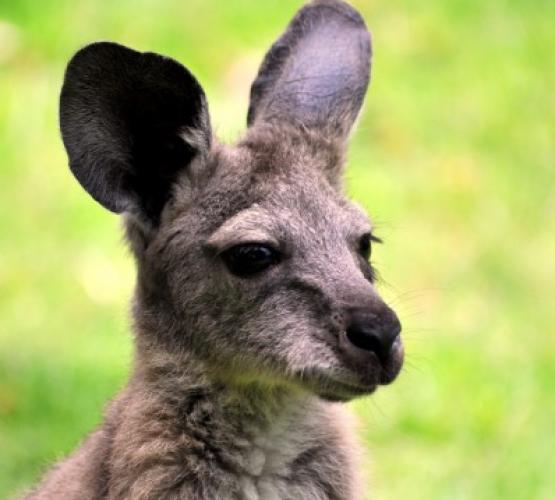
Wallaroo is intermediate in size between the kangaroos and the wallabies. All share a particular habit of stance: wrists raised, elbows tucked close into the body, and shoulders were thrown back, and all have a large, black-skinned.
Water Dragon
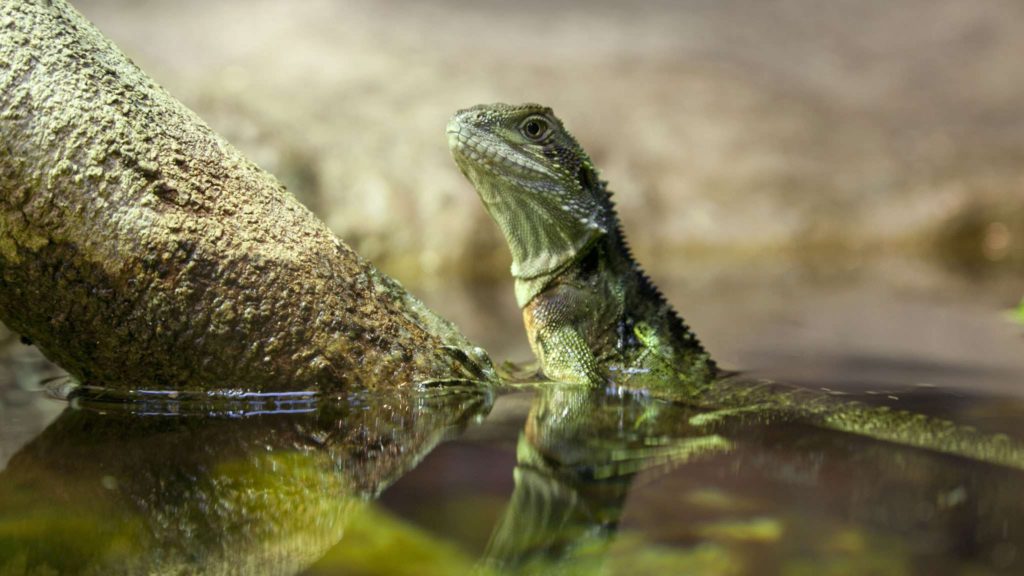
The Australian water dragon which includes the eastern water dragon and the Gippsland water dragon subspecies is a native to eastern Australia from Victoria northwards to Queensland. There may be a small introduced population on the south-east coast of South Australia.
Australian water dragons have long powerful limbs and claws for climbing, a long muscular laterally-compressed tail for swimming, and prominent nuchal and vertebral crests.
Including their tails, which comprise about two-thirds of their total length, adult females grow to about 60 cm (2 feet) long, and adult males can grow slightly longer than one metre (3 feet) and weigh about 1 kg. Males show bolder colouration and have larger heads than females. Colour is less distinct in juveniles.
Wombat
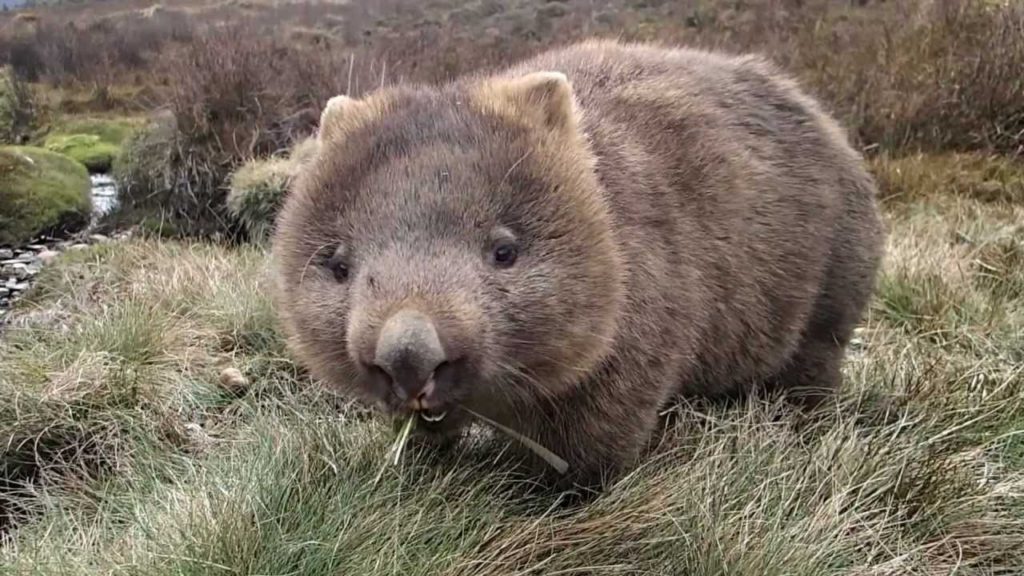
Wombats are short-legged, muscular quadrupedal that are native to Australia. They are about 1 m (40 in) in length with small, stubby tails and weigh between 20 and 35 kg (44 and 77 lb). They are adaptable and habitat tolerant, and are found in forested, mountainous, and heathland areas of southern and eastern Australia, including Tasmania, as well as an isolated patch of about 300 ha (740 acres) in Epping Forest National Park in central Queensland.
Yabby
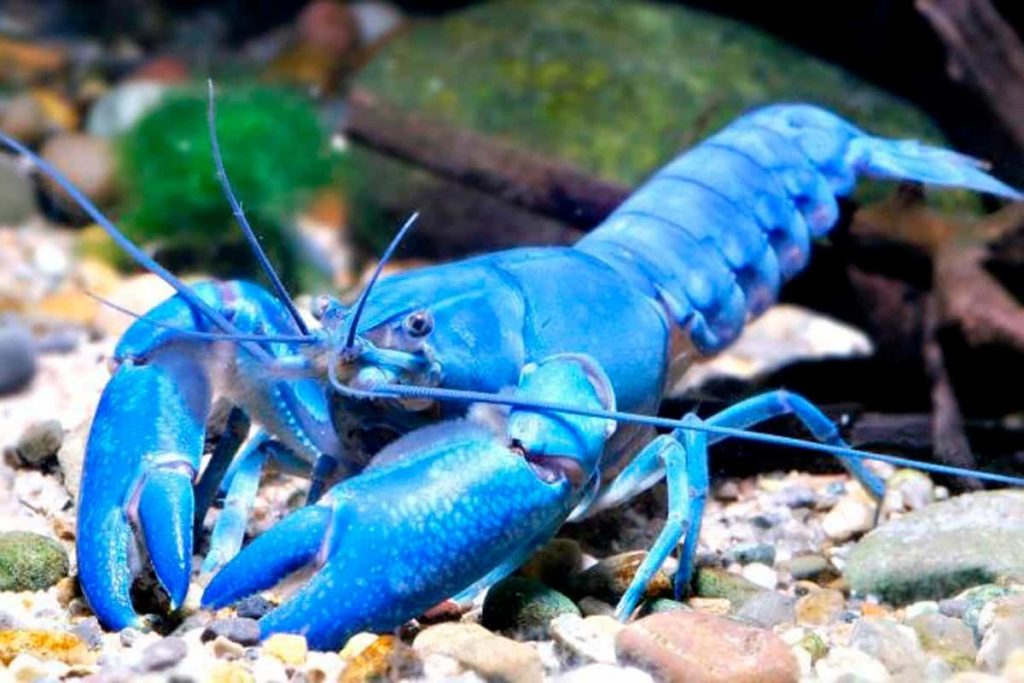
The common yabby is an Australian freshwater crustacean. It is listed as a vulnerable species, though wild yabby populations remain strong, and have expanded into new habitats created by reservoirs and farm dams.
Other names frequently used for Cherax destructor include the blue yabby or cyan yabby.
Yabbies occasionally reach up to 30 cm (12 in) in length but are more commonly 10–20 cm (4–8 in) long.
Colour is highly variable and depends on water clarity and habitat; yabbies can range from black, blue-black, or dark brown in clear waters to light brown, green-brown, or beige in turbid waters. Yabbies specifically bred to be a vibrant blue colour are now popular in the aquarium trade in Australia.
An Australian yabby can travel up to 60 kilometres (37 mi) across the land in search of new waters to make its home.
The word “yabby” comes from the Wemba Wemba, an Aboriginal Australian language.
